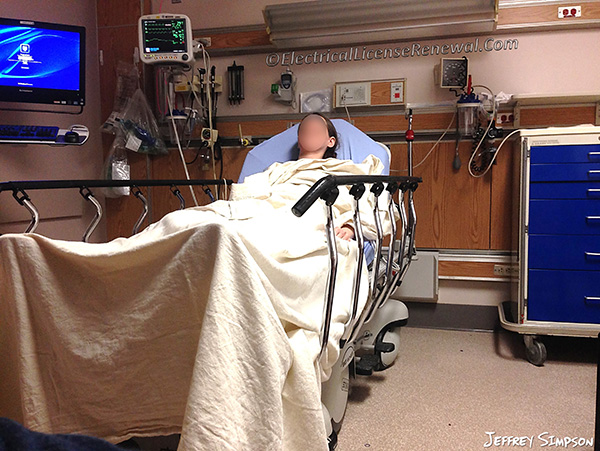517.2 Patient Care Space.

Code Change Summary: The definition of a patient care space has been revised.
In order to correlate with NFPA 99 Health Care Facilities Code, the definition of a patient care space has been revised and now the specific categories are shown. It is likely that the revised definition will change again in future NEC® code cycles with the removal of the terms “Basic care”, “General care”, “Critical care” and “Support space”. NFPA 99-2015 no longer uses these terms. Patient care spaces in NFPA 99 are referred to as category 1-4 depending on how the space is used.
It is important to remember that the Governing Body (also defined in 517.2) determines the use of each area in a health care facility. If working or inspecting in a health care facility and questions arise as to the use of a particular area, it should be directed to the Governing Body for a determination before proceeding.
Certain areas of health care facilities are required to be wired with redundant grounding wiring methods or installed in specific raceways to provide mechanical protection in order to maintain electrical operation and increase reliability of the electrical system. Knowing the specific purpose of each designated area ensures the correct wiring methods will be used.
Below is a preview of the NEC®. See the actual NEC® text at NFPA.ORG for the complete code section. Once there, click on their link to free access to the 2017 NEC® edition of NFPA 70.
2014 Code Language:
517.2 Patient Care Space. Space within a health care facility wherein patients are intended to be examined or treated.
Basic Care Space. Space in which failure of equipment or a system is not likely to cause injury to the patients or caregivers but may cause patient discomfort.
General Care Space. Space in which failure of equipment or a system is likely to cause minor injury to patients or caregivers.
Critical Care Space. Space in which failure of equipment or a system is likely to cause major injury or death to patients or caregivers.
Support Space. Space in which failure of equipment or a system is not likely to have a physical impact on patients or caregivers.
See actual NEC® text for informational notes.
2017 Code Language:
517.2 Patient Care Space. Any space of a health care facility wherein patients are intended to be examined or treated.
Basic Care (Category 3) Space. Space in which failure of equipment or a system is not likely to cause injury to the patients, staff, or visitors but can cause patient discomfort.
General Care (Category 2) Space. Space in which failure of equipment or a system is likely to cause minor injury to patients, staff, or visitors.
Critical Care (Category 1) Space. Space in which failure of equipment or a system is likely to cause major injury or death of patients, staff, or visitors.
N Support (Category 4) Space. Space in which failure of equipment or a system is not likely to have a physical impact on patient care.
Informational Note: [Category 4] spaces were formerly known as support rooms [(spaces)]. Examples of support spaces include, but are not limited to, anesthesia work rooms, sterile supply, laboratories, morgues, waiting rooms, utility rooms, and lounges.
See actual NEC® text for informational notes.